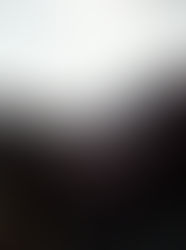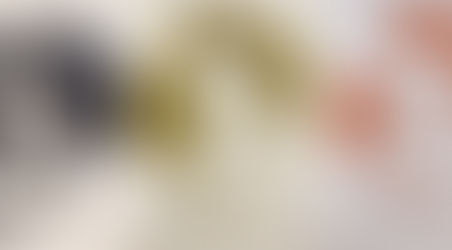23rd November - Exhibitions
- Taylor H
- Nov 30, 2017
- 4 min read
On the 23rd of November, we went on a trip to London. We went to the Photographer's Gallery first, and then we transitioned to the Whitechapel gallery afterwards.
We went to the Photographer's Gallery first to see an exhibition of some Polaroids that Oscar nominated film maker Wim Wenders took. The whole fourth floor was filled with photography fans all pottering about staring at small squares stuck to the wall. These Polaroids supposedly "Offers a rare insight into the artist's thought processes, preoccupations and aesthetic inspirations". I waited a little for an opening to join the rotating swarm of people, and I had a look to see them for myself. The photographs contained portraits of people he worked with, friends and family, still-lives, street scenes, landscapes, and other such things. While I quite enjoyed peering into a tiny photograph on the wall, I was overall unimpressed with the whole exhibition. While I didn't think the photographs were bad - I think that he and I have a similar shooting style - It's just that I think that the only reason why the exhibition was there in the first place was because of his fame as a film maker. I also think that the photographs could have been taken by anyone with a Polaroid camera. By that I mean that they didn't really have a unique style to them. Again, they weren't bad, but if you didn't tell anyone who took the photographs, then not only would no one know who they were by, but they probably wouldn't get an exhibition in the first place. I didn't get any photographs of my time in the exhibition unfortunately. This was due to many reasons, including the flowing crowd of people, and the low light setting. Instead, enjoy some images I found on the internet (sources document available at the end of the pictures).


http://www.theglassmagazine.com/the-photographers-gallery-presents-instant-stories-wim-wenders-polaroids/
The second exhibition again was as the Whitechapel Gallery. We went there primarily to see the Thomas Ruff exhibition, more specifically his 'jpeg' series. The series didn't really impress me too much. The idea behind it is fairly interesting, but the photographs themselves aren't visually that great to look at.

The photographs that were on display lacked colour, and the purposeful bad quality of the photos didn't play well to my liking of them, since bad quality photos are usually shunned and stayed away from. Again, like I said, the idea was there - about disasters, both natural and man-made - and the commentary of how people circulate these disasters online, but I just don't really think that I personally like the look of the photos. To make them, Thomas took photos that were taken from a mobile phone, and upscaled them to look distorted.

https://www.metmuseum.org/toah/works-of-art/2006.92/

https://artblart.com/tag/jpegs-photographs-by-thomas-ruff/
This subconsciously inspired my photographer response.
On the way back from the trip, I was taking photos. The journey back took a couple of hours, and I was taking photographs of light with a low shutter speed and a defocused lens. My DSLR makes quite a bit of noise though, so when I was well into my 150th photograph, I was asked politely to stop taking photos. Everyone was tired, and I was making a repetitive noise, so I understood. I wanted to carry on taking photographs though, So, I whipped out my phone, and carried it on. Right from the beginning, I noticed that the quality of the photographs were bad. I was using the stock camera app, so there wasn't much in terms of aperture/ISO settings, so the photos all came out noisy, and you couldn't see much if the photos didn't come out blurry. I wasn't discouraged though, I carried on. Once I had about 60 photos of dark, blurry photos, I realised that the photos that I was taking are similar in format as the ones that Thomas Ruff used. This inspired me to attempt to take more cohesive photographs where you could tell what was going on in them, as difficult as that was. When I got back home, I hopped on to the computer, and began my artist's response. I began by writing down the photos that I thought looked the best, and that I wanted to work with. I ended up with 35 photos, and I set to work (the final pieces that I came out with contain 6 different photos that weren't even on the list. It's important to improvise when you need to). I wanted to replicate the low quality idea that Thomas Ruff did, but I wanted to achieve it in a more aesthetically pleasing way. I took each image, and opened them in MS Paint (I did them one at a time, I don't think my computer could handle them all at once). I downscaled them to 1% of their original size, and then 500% of that size three times, to make them as close to the original size as possible. This produced a pixelated version of the original image, however each pixel had a sort of detail to them, and they weren't just one solid colour. Then, once I completed this with every photo on the list, I opened a photo editor, and overlayed the original photo over the top of the pixelated one at 50% opacity. I liked what I saw, and applied a filter that sharpened the images a little, and brightened and saturated the colours. My favourite images that was produced out of this process were three storefronts - one B&Q, one Sainsbury's, and one Holiday Inn Express - and coincidentally, I took three images of each storefront, each one decreasing in quality (by quality, I mean blurriness, and visibility of the subject). I repeated the process for those lower quality ones, and compiled them all into a little collage, decreasing in quality from left to right.



Looking at the images that I have produced, I can say that I like them quite a bit. I enjoy the bright colours, and my favourite bit is where you can still see detail, but then the pixelated version of that detail underneath it, which creates a nice layered detail. I'm not going to say what I have produced is better than Thomas Ruff's work (because it isn't), but I do prefer my work because of the aesthetics (colour, detail, composition, etc).









I think that these images would look great blown up to about A1 size, so you could really see and get into the detail - or lack thereof - of the photo once it's bigger.





























Comments